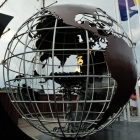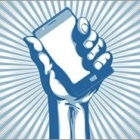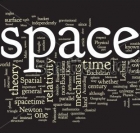-
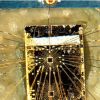 +19 +1
+19 +1Scientific experiment creates ‘two dimensional’ time
Scientists have created a new phase of matter, in which time has two dimensions. The creation of an “extra” dimension in time could change the way we think about matter as well as helping build quantum computers that could themselves change the world, according to the researchers who found it.
-
 +15 +1
+15 +1Reality doesn’t exist until you measure it, quantum parlor trick confirms
Two players leverage quantum rules to achieve a seemingly telepathic connection
-
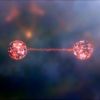 +20 +1
+20 +1Record-setting quantum entanglement connects two atoms across 20 miles
Researchers in Germany have demonstrated quantum entanglement of two atoms separated by 33 km (20.5 miles) of fiber optics. This is a record distance for this kind of communication and marks a breakthrough towards a fast and secure quantum internet.
-
 +17 +1
+17 +1Chicago expands and activates quantum network, taking steps toward a secure quantum internet
Quantum security trials with Toshiba have begun on 124-mile quantum network—one of the nation’s longest—which will soon be open to industry and academics for testing.
-
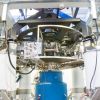 +15 +1
+15 +1'Time crystals' work around laws of physics to offer new era of quantum computing
The connecting of two "time crystals" in a superfluid of helium-3 barely one-ten-thousandth of a degree above absolute zero could be a huge step toward a new kind of quantum computer. Time crystals are bizarre structures of atoms, the existence of which was only predicted as recently as 2012, with experimental proof following a few years later. In a normal crystal, such as diamond or salt, the atoms are arranged in a regularly repeating spatial pattern — a lattice or similar framework. And like most materials, when the atoms are in their ground state — their lowest possible energy level — they stop jiggling.
-
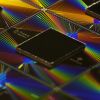 +20 +1
+20 +1Quantum computer succeeds where a classical algorithm fails
People have performed many mathematical proofs to show that a quantum computer will vastly outperform traditional computers on a number of algorithms. But the quantum computers we have now are error-prone and don't have enough qubits to allow for error correction. The only demonstrations we've had involve quantum computing hardware evolving out of a random configuration and traditional computers failing to simulate their normal behavior. Useful calculations are an exercise for the future.
-
 +24 +1
+24 +1World First Room Temperature Quantum Computer Installed in Australia
The world's first on-premises, room-temperature quantum computer has just been installed in Pawsey's Supercomputing Research Centre, in Australia. Developed by Australian start-up Quantum Brilliance, the quantum accelerator doesn't require any exotic cooling methods to maintain quantum coherence, and has even been developed for installation in a typical rack system. The new quantum accelerator will thus be taken for a spin in tandem with Pawsey's new, state-of-the-art Setonix, its HPE Cray Ex supercomputer.
-
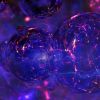 +17 +1
+17 +1A New Quantum Technique Could Change How We Study The Universe
Astronomy is undergoing a revolution. In fact, you might argue there are a number of them. Exoplanet research has progressed significantly in the last ten years, gravitational wave astronomy has developed as a new area, and the first photographs of supermassive black holes (SMBHs) have been taken.
-
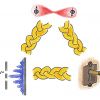 +13 +1
+13 +1A ‘beyond-quantum’ equivalence principle for superposition and entanglement
The physics of the microrealm involves two famous and bizarre concepts: superposition and entanglement. Both are described mathematically by quantum theory, but many physicists believe that one day quantum theory will need to be replaced by an ultimate theory of reality that lies beyond quantum theory. Now, a team of physicists and mathematicians has discovered a new connection between these two weird properties that does not assume that quantum theory is correct. Their work, partially funded by the Foundational Questions Institute, FQXi, confirms that current quantum cryptographic protocols, which promise ultra-secure un-hackable...
-
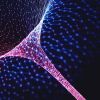 +22 +1
+22 +1Physicists Think They've Finally Cracked Stephen Hawking's Famous Black Hole Paradox
At the heart of every black hole sits a problem. As they sizzle away into nothingness over the eons, they take with them a small piece of the Universe. Which, quite frankly, just isn't in the rule book.
-
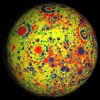 +22 +1
+22 +1New quantum gravity sensor could someday peel away the surfaces of other worlds
A new quantum gravity sensor may help scientists find features like groundwater under the surface of a planet or moon thanks to subtle marks those features leave in the planet's gravitational field.
-
 +12 +1
+12 +1Scientists think quantum tunneling in space led to life on Earth
A team of scientists recently published a paper indicating that life on Earth is the result of what can only accurately be described as cosmic teleportation. Humankind has long sought to penetrate the mystery of how life came to exist on our planet. But what if the only reason we’re here right now is because the universe cheats?
-
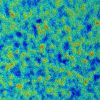 +16 +1
+16 +1Mapping the quantum future with smart TV technology
Scientists have created the first ever 2D map of the Overhauser field in organic LEDs, shedding light on the challenges we face in designing accurate quantum-based technologies. Television used to be known as ‘the idiot box’. But the organic LEDs found in modern flat screens are far from stupid. In fact, they’re helping us to draw a map that could unlock the quantum future. No wonder they’re now called smart TVs.
-
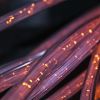 +23 +1
+23 +1Quantum internet: the second quantum revolution
Quantum teleportation allows information to be transmitted between two linked quantum particles regardless of the distance that separates them. Unlike science fiction teleportation, which sends matter from one point in space to another, quantum teleportation sends information.
-
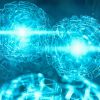 +20 +1
+20 +1A New Method for Quantum Computing in Trapped Ions
The researchers work at QuSoft and the Institute of Physics in the groups of Rene Gerritsma and Arghavan Safavi-Naini. The effort, which was led by the PhD candidate Matteo Mazzanti, combines two important ingredients. One is a so-called trapped-ion platform, one of the most promising candidates for quantum computing that makes use of ions – atoms that have either a surplus or a shortage of electrons and as a result are electrically charged. The other is the use of a clever method to control the ions supplied by optical tweezers and oscillating electric fields.
-
 +24 +1
+24 +1Quantum friction explains strange way water flows through nanotubes
Water flows more easily through narrower carbon nanotubes than larger ones and we have struggled to explain why. Now, one team has an answer: it may all be due to quantum friction.
-
 +15 +1
+15 +1Isro conducts breakthrough demonstration of hack-proof quantum communication
In a major step forward towards satellite-based quantum communication, scientists from Ahmedabad-based Space Applications Centre and Physical Research Laboratory successfully demonstrated quantum entanglement. Using real-time Quantum Key Distribution (QKD), they conducted hack-proof communication between two places separated by 300 meters.
-
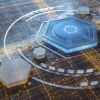 +32 +1
+32 +1The US government needs a commercialization strategy for quantum
Quantum computers, sensors and communications networks have the potential to bring about enormous societal and market opportunities — along with an equal amount of disruption. Unfortunately for most of us it takes a Ph.D. in physics to truly understand how quantum technologies work, and luminaries in the field of physics will be the first to admit that even their understanding of quantum mechanics remains incomplete.
-
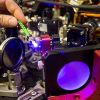 +14 +1
+14 +1Physicists have coaxed ultracold atoms into an elusive form of quantum matter
An elusive form of matter called a quantum spin liquid isn’t a liquid, and it doesn’t spin — but it sure is quantum. Predicted nearly 50 years ago, quantum spin liquids have long evaded definitive detection in the laboratory. But now, a lattice of ultracold atoms held in place with lasers has shown hallmarks of the long-sought form of matter, researchers report in the Dec. 3 Science.
-
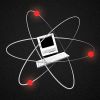 +17 +1
+17 +1Quantum computers near a quantum leap
A new class of powerful computers is on the brink of doing something important: actual useful work.
Submit a link
Start a discussion







